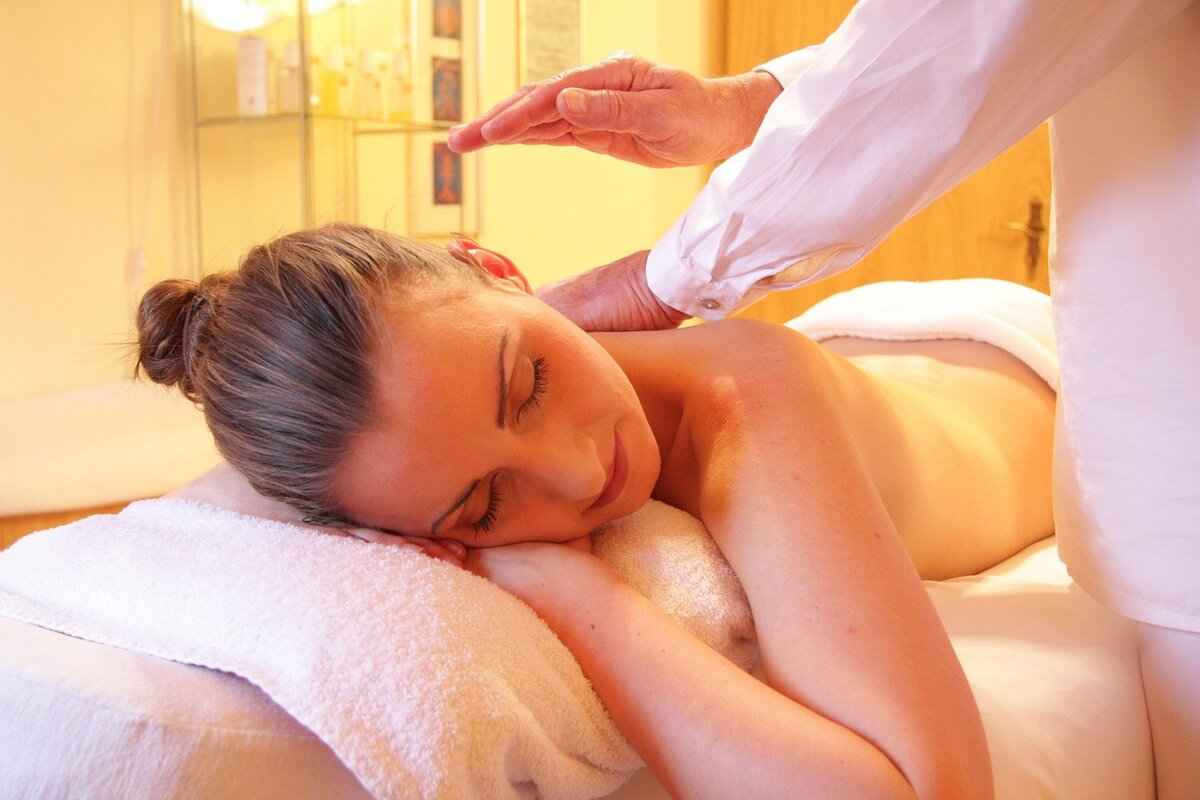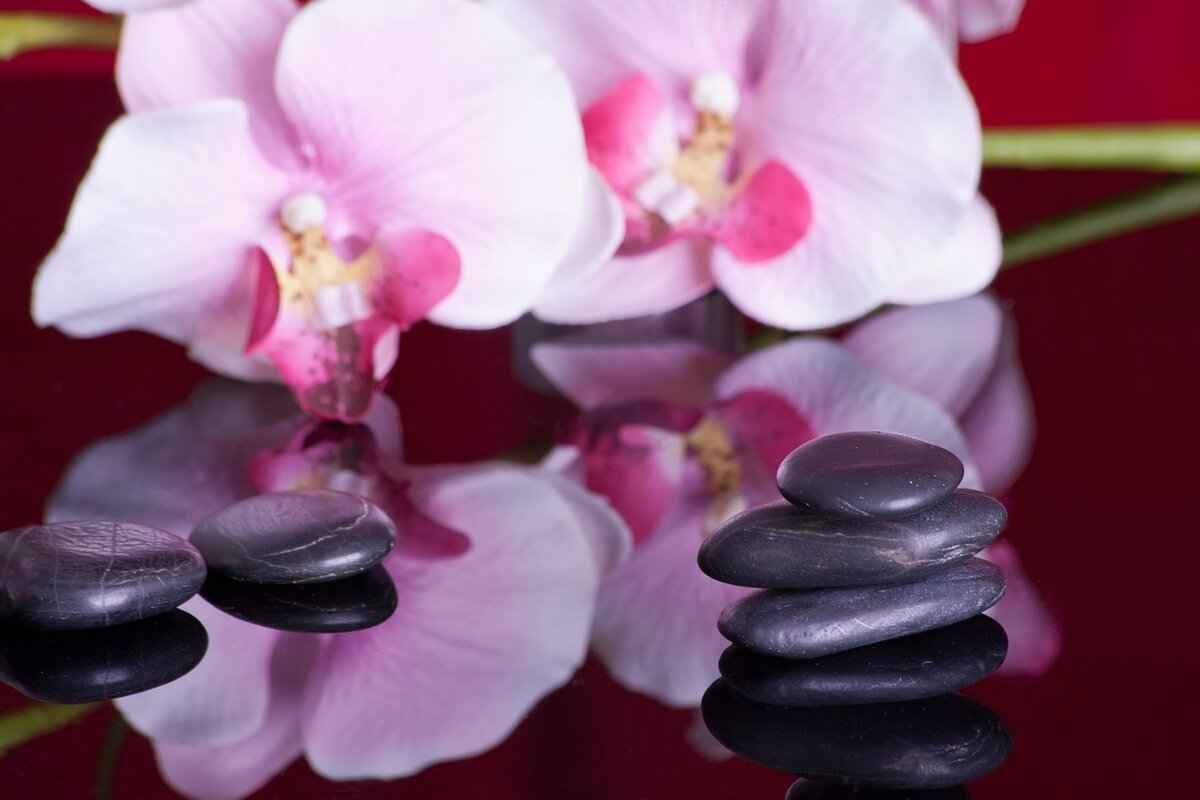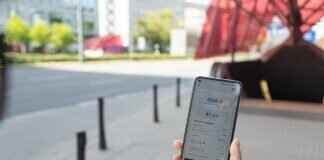Asian massage techniques have gained recognition worldwide for their profound ability to promote relaxation and alleviate stress. This article delves into the rich tapestry of these ancient practices, examining their unique methodologies, benefits, and the scientific principles that underscore their effectiveness in enhancing overall well-being.
Understanding Asian Massage Techniques
Asian massage is an umbrella term that includes various methods, each with its own historical significance and approach to stress relief. Techniques such as Shiatsu, Tui Na, and Thai massage are rooted in centuries-old traditions, emphasizing the connection between body, mind, and spirit. These practices not only address physical discomfort but also aim to restore emotional balance.
The Benefits of Asian Massage for Stress Relief
Numerous studies highlight the benefits of Asian massage techniques, including:
- Reduction of anxiety: Regular sessions can lower cortisol levels, leading to decreased feelings of stress.
- Improved mood: Massage stimulates the release of endorphins, enhancing overall emotional well-being.
- Enhanced physical health: Techniques like acupressure improve circulation and promote relaxation of muscles.
Shiatsu: The Art of Finger Pressure
Shiatsu, a Japanese technique, employs finger pressure on specific points along the body’s meridians. This method is particularly effective in relieving tension and promoting relaxation by balancing energy flow.
The Science Behind Shiatsu
Research shows that Shiatsu can activate the body’s natural healing processes, alleviating symptoms related to stress. Physiological effects include improved circulation and reduced muscle tension, which contribute to a state of relaxation.
Tui Na: Chinese Therapeutic Massage
Tui Na combines acupressure and manipulation, offering a holistic approach to stress relief. This method addresses both physical and emotional aspects, promoting overall health and well-being.
Thai Massage: A Dynamic Approach to Relaxation
Thai massage stands out due to its incorporation of stretching and deep tissue work. This unique blend not only alleviates stress but also improves flexibility and range of motion.
Key Techniques in Thai Massage
Understanding fundamental techniques, such as gentle stretches and pressure points, enhances the effectiveness of Thai massage in relieving stress.
Incorporating Mindfulness into Massage Practices
Mindfulness is essential for maximizing the benefits of massage. By integrating mindfulness techniques, individuals can deepen their relaxation experience, allowing for greater stress relief during sessions.

Understanding Asian Massage Techniques
involves exploring a rich tapestry of practices that have been refined over centuries. These techniques are not merely about physical manipulation; they are deeply rooted in cultural traditions and philosophies that emphasize the balance of body, mind, and spirit. Each method offers distinct approaches to achieving relaxation and alleviating stress, providing individuals with a holistic means of enhancing their well-being.
Among the most prominent techniques is Shiatsu, a Japanese form of massage that employs precise finger pressure on specific points along the body’s meridians. This method is designed to restore energy flow and alleviate tension, making it an effective tool for managing stress. Historically, Shiatsu is influenced by traditional Chinese medicine, which underscores the importance of energy balance in maintaining health.
Another significant technique is Tui Na, a traditional Chinese massage that integrates acupressure and therapeutic manipulation. Tui Na not only addresses physical ailments but also aims to harmonize the body’s energy, thereby promoting overall health and well-being. Its holistic approach makes it a favored choice for those seeking to alleviate stress while also addressing underlying health issues.
Thai massage stands out for its dynamic incorporation of stretching and deep tissue work. Originating from ancient healing practices, this technique promotes flexibility and relaxation simultaneously. The combination of rhythmic movements and gentle pressure can significantly reduce stress levels, making it a rejuvenating experience for both the body and mind.
Each of these techniques is imbued with historical significance, reflecting the cultural values of their origins. They offer not only physical benefits but also mental clarity and emotional balance. As individuals seek effective ways to manage stress in today’s fast-paced world, understanding these diverse Asian massage techniques can empower them to find the right method that resonates with their personal wellness journey.

The Benefits of Asian Massage for Stress Relief
Asian massage techniques are celebrated for their ability to promote relaxation and alleviate stress. These ancient practices, deeply rooted in cultural traditions, offer a holistic approach to mental and physical well-being. By focusing on specific pressure points and techniques, Asian massage not only targets stress but also enhances overall health.
One of the primary benefits of Asian massage is its capacity to reduce anxiety. Techniques such as Shiatsu and Tui Na utilize finger pressure and acupressure to stimulate the body’s natural healing processes. This stimulation can lead to a significant decrease in cortisol levels, the hormone associated with stress. As a result, individuals often experience a marked improvement in their mood and emotional stability.
Moreover, these massage techniques enhance physical well-being by improving circulation and promoting muscle relaxation. For instance, Thai massage incorporates stretching and deep tissue manipulation, which not only relieves tension but also increases flexibility. This physical relief can translate into a greater sense of mental clarity and reduced stress levels.
- Shiatsu: Focuses on finger pressure to release blocked energy, promoting relaxation.
- Tui Na: Combines acupressure and manipulation for a comprehensive approach to stress relief.
- Thai Massage: Engages the body through stretching, enhancing both physical and mental relaxation.
In addition to these physical benefits, Asian massage techniques encourage a state of mindfulness. Practitioners often emphasize the importance of being present during the massage, which can further enhance the relaxation experience. This mindfulness aspect not only aids in stress relief during the session but can also equip individuals with tools to manage stress in their daily lives.
In summary, the benefits of Asian massage techniques for stress relief are multi-faceted. By addressing both the physical and emotional components of stress, these practices offer a comprehensive solution for those seeking to improve their overall well-being.
Shiatsu: The Art of Finger Pressure
Shiatsu is a traditional Japanese massage technique that emphasizes the application of finger pressure on specific points along the body’s meridians. This holistic practice is rooted in the principles of Eastern medicine, focusing on the flow of energy (or “ki”) throughout the body. By targeting these vital points, Shiatsu aims to restore balance and promote overall well-being.
The effectiveness of Shiatsu in relieving tension and promoting relaxation has been widely recognized. During a Shiatsu session, practitioners use their fingers, palms, and thumbs to apply pressure, stretching, and manipulating the body. This not only helps alleviate physical discomfort but also addresses emotional stress. Many people report feeling a profound sense of calm and renewal after a session, as the technique encourages deep relaxation and mindfulness.
Research supports the benefits of Shiatsu in managing stress-related symptoms. Studies indicate that the pressure applied during Shiatsu can stimulate the body’s natural healing processes, enhancing circulation and reducing muscle tension. This physiological response can lead to a decrease in anxiety levels and an improvement in mood, making Shiatsu a valuable tool for stress relief.
For those interested in incorporating Shiatsu into their wellness routine, there are several basic techniques that can be practiced at home. Simple self-massage techniques focusing on areas such as the neck, shoulders, and lower back can provide immediate relief from tension. Additionally, learning to perform gentle stretches can enhance the benefits of Shiatsu, promoting flexibility and relaxation.
In summary, Shiatsu is not just a massage technique but a comprehensive approach to health that combines physical touch with the principles of energy flow. Its ability to relieve tension and promote relaxation makes it an essential practice for those seeking to enhance their overall well-being.
The Science Behind Shiatsu
Shiatsu, a traditional Japanese massage technique, has garnered attention for its potential to enhance physical and mental well-being. Research indicates that Shiatsu can stimulate the body’s natural healing processes, playing a crucial role in alleviating stress-related symptoms. This section delves into the physiological effects of Shiatsu on the body, providing insights into how this practice promotes relaxation and overall health.
At its core, Shiatsu operates on the principles of acupressure, targeting specific points along the body’s meridians. By applying pressure with fingers, palms, and thumbs, Shiatsu practitioners aim to balance the flow of Qi (energy) throughout the body. This balancing act can lead to a reduction in muscle tension, improved circulation, and a heightened sense of relaxation.
| Physiological Effects of Shiatsu | Description |
|---|---|
| Reduces Cortisol Levels | Shiatsu has been shown to lower cortisol, a hormone associated with stress, leading to improved mood and relaxation. |
| Enhances Blood Flow | The technique stimulates circulation, which can help deliver oxygen and nutrients to various body tissues, promoting healing. |
| Releases Endorphins | Shiatsu can trigger the release of endorphins, the body’s natural painkillers, contributing to an overall sense of well-being. |
| Promotes Muscle Relaxation | The pressure applied during Shiatsu helps to relieve tension in tight muscles, which can alleviate discomfort and enhance mobility. |
Moreover, Shiatsu not only addresses physical symptoms but also has profound effects on mental health. Many individuals report a decrease in anxiety and an improved ability to cope with daily stressors after receiving Shiatsu treatments. This holistic approach is particularly beneficial for those dealing with chronic stress, as it encourages a state of deep relaxation and mindfulness.
In summary, the physiological effects of Shiatsu extend beyond mere relaxation. By promoting balance within the body, reducing stress hormones, and enhancing overall vitality, Shiatsu emerges as a powerful tool for those seeking to improve their mental and physical health.
Shiatsu Techniques for Home Practice
Shiatsu techniques are not only beneficial when performed by a trained practitioner but can also be easily integrated into your daily routine at home. By learning these basic techniques, individuals can take charge of their own wellness and find effective ways to manage stress and promote relaxation.
Here are some simple Shiatsu techniques that can be practiced independently:
- Palming the Abdomen: Sit comfortably and place your palms on your abdomen. Apply gentle pressure while taking deep breaths. This technique helps to calm the mind and relieve tension in the stomach area.
- Thumb Pressure on the Shoulders: Using your thumbs, apply firm pressure to the area between your neck and shoulders. Hold for a few seconds and release. This can alleviate tightness and promote relaxation.
- Hand Massage: Gently massage each finger and the palm of your hand, applying pressure to specific points. This stimulates energy flow and can help reduce feelings of anxiety.
- Foot Reflexology: Sit comfortably and focus on your feet. Apply pressure to the soles and the area between the toes. This can enhance overall well-being and relieve stress accumulated in the body.
Each of these techniques can be performed in the comfort of your home, making them accessible and practical. To maximize their effectiveness, it’s essential to create a calm environment before starting. Consider dimming the lights, playing soft music, or using aromatherapy to enhance your experience.
Incorporating these Shiatsu techniques into your routine can provide immediate relief and empower you to manage stress effectively. Remember to listen to your body and adjust the pressure according to your comfort level.
Tui Na: Chinese Therapeutic Massage
Tui Na is a traditional Chinese therapeutic massage that intricately weaves together the principles of acupressure and manual manipulation. This ancient practice is not merely a relaxation technique; it embodies a holistic approach to health and well-being, addressing both physical and emotional stressors. Unlike Western massage techniques that primarily focus on muscle relaxation, Tui Na aims to restore balance within the body’s energy systems, known as Qi.
Originating from ancient Chinese medicine, Tui Na has been practiced for thousands of years, making it one of the oldest forms of bodywork. The term “Tui Na” translates to “push and grasp,” reflecting the primary movements used in the technique. Practitioners apply pressure to specific points on the body, similar to acupuncture, but utilize their hands to manipulate the muscles and joints, promoting circulation and alleviating tension.
One of the standout features of Tui Na is its ability to address the underlying causes of stress rather than just the symptoms. By focusing on the meridians—the pathways through which Qi flows—Tui Na can help release blockages that contribute to stress and discomfort. This method not only aids in physical relaxation but also enhances mental clarity and emotional stability.
Research supports the effectiveness of Tui Na in reducing stress levels, improving sleep quality, and enhancing overall health. The technique encourages the body’s natural healing processes, making it a valuable tool for those seeking a holistic approach to wellness. Furthermore, Tui Na can be tailored to individual needs, allowing practitioners to address specific concerns such as chronic pain, anxiety, or fatigue.
For those interested in experiencing the benefits of Tui Na, it is advisable to seek a qualified practitioner who can provide personalized treatment. As with any therapeutic practice, understanding the principles behind Tui Na can enhance the experience and outcomes, making it a powerful ally in the pursuit of stress relief and holistic health.

Thai Massage: A Dynamic Approach to Relaxation
Thai massage is a distinctive practice that stands out among various Asian massage techniques due to its combination of stretching and deep tissue work. This ancient art form, rooted in Buddhist traditions, emphasizes the importance of energy flow throughout the body, making it a holistic approach to relaxation and stress relief.
One of the primary benefits of Thai massage is its ability to alleviate stress. The incorporation of stretching techniques not only helps to release physical tension but also promotes mental clarity. As the therapist guides the recipient through a series of gentle stretches, the body gradually loosens up, facilitating a deeper state of relaxation. This process can significantly lower cortisol levels, the hormone associated with stress, leading to an overall sense of calm.
Moreover, Thai massage enhances flexibility by increasing the range of motion in the joints and muscles. The deep tissue work involved in this technique targets specific pressure points, helping to release built-up tension and improve circulation. This dual approach not only aids in physical recovery but also contributes to emotional well-being, making it an effective remedy for those battling stress-related issues.
In addition to its physical benefits, Thai massage encourages mindfulness. As clients focus on their breath and the sensations within their bodies during the session, they cultivate a greater awareness of their mental state. This practice of mindfulness can extend beyond the massage room, helping individuals manage stress in their daily lives.
Ultimately, the unique characteristics of Thai massage make it a powerful tool for those seeking relief from stress and a pathway to improved flexibility. By integrating these techniques into regular wellness routines, individuals can experience profound changes in both their physical and emotional health.
Key Techniques in Thai Massage
Thai massage is a unique and dynamic approach to relaxation that combines elements of acupressure, assisted yoga postures, and deep tissue work. Understanding the key techniques used in Thai massage can significantly enhance its effectiveness, making it a powerful tool for stress relief. Below, we explore some fundamental techniques and their specific benefits.
- Palming and Thumbing: This technique involves using the palms and thumbs to apply pressure along the body’s energy lines, known as Sen lines. This pressure helps to release tension and promote relaxation, making it particularly effective for alleviating stress.
- Stretching: Thai massage incorporates various stretching techniques that improve flexibility and range of motion. These stretches not only relieve physical tension but also help to calm the mind, contributing to an overall sense of well-being.
- Joint Mobilization: By gently moving joints through their full range of motion, practitioners can help release tightness and improve circulation. This technique is beneficial for reducing stress, as it promotes a greater sense of physical ease.
- Acupressure: Similar to Shiatsu, Thai massage employs acupressure techniques to stimulate specific points on the body. This can help balance energy flow and reduce feelings of anxiety, providing immediate stress relief.
- Breathing Techniques: Incorporating deep breathing exercises during the massage enhances relaxation. Practitioners encourage clients to focus on their breath, which can help clear the mind and reduce stress levels.
Each of these techniques plays a crucial role in enhancing the effectiveness of Thai massage for stress relief. By combining physical manipulation with mindful awareness, practitioners create a holistic experience that addresses both the body and the mind.
How to Prepare for a Thai Massage Session
Preparing for a Thai massage session is crucial for ensuring that you receive the maximum benefits from this unique therapeutic practice. Thai massage is not only about physical manipulation but also involves mental readiness. Below are some essential tips to help you mentally and physically prepare for your session.
- Hydrate: Drink plenty of water before your massage. Staying hydrated helps to keep your muscles pliable and enhances circulation, allowing for better results during the session.
- Dress Comfortably: Wear loose-fitting clothing that allows for easy movement. Traditional Thai massage often involves stretching, so comfortable attire will facilitate your experience.
- Arrive Early: Arriving a few minutes early can help you relax and transition into the massage environment. Use this time to breathe deeply and clear your mind.
- Set Intentions: Take a moment to think about what you hope to achieve from the session. Whether it’s stress relief, increased flexibility, or pain reduction, setting clear intentions can enhance your experience.
- Communicate: Be open with your therapist about any areas of discomfort or specific needs. Clear communication ensures that the massage is tailored to your requirements.
- Mental Relaxation: Engage in mindfulness or meditation practices prior to your session. This can help to calm your mind and prepare you for the deep relaxation that follows.
By following these preparation tips, you can create a conducive environment for your Thai massage session, allowing you to fully immerse yourself in the experience. Remember, the more prepared you are, the greater the benefits you will receive.

Incorporating Mindfulness into Massage Practices
can significantly enhance the overall experience, leading to profound relaxation and stress relief. By integrating mindfulness techniques, individuals can deepen their connection with their bodies and the present moment, creating a holistic approach to wellness.
Mindfulness, defined as the practice of being fully present and engaged in the moment, can transform a standard massage into a deeply restorative experience. When clients focus on their breath and bodily sensations during a massage, they are more likely to release tension and stress. This section explores various mindfulness techniques that can be easily incorporated into massage practices.
- Deep Breathing: Encouraging clients to practice deep, rhythmic breathing can help calm the nervous system. Inhale deeply through the nose, hold for a moment, then exhale slowly through the mouth. This technique can be initiated at the start of the session and revisited throughout.
- Body Scan: A body scan involves bringing awareness to different parts of the body, starting from the toes and moving up to the head. This practice helps clients identify areas of tension and encourages relaxation.
- Visualization: Guiding clients to visualize a peaceful scene, like a serene beach or a tranquil forest, can enhance their sense of calm. This technique can be introduced verbally during the massage to help deepen relaxation.
Moreover, mindfulness not only benefits the client but also enhances the massage therapist’s ability to connect with their client’s needs. When therapists practice mindfulness, they become more attuned to the subtle cues of the client’s body, allowing for a more tailored and effective massage experience.
Incorporating mindfulness into massage practices not only fosters relaxation but also promotes a deeper understanding of the body’s responses to stress. This approach encourages a cycle of awareness and healing that extends beyond the massage session.
Frequently Asked Questions
- What is Asian massage?
Asian massage refers to various traditional techniques from Asia, such as Shiatsu, Tui Na, and Thai massage, designed to promote relaxation and relieve stress. Each method has unique approaches and benefits that contribute to overall well-being.
- How does Shiatsu work for stress relief?
Shiatsu utilizes finger pressure on specific points along the body’s meridians, helping to release tension and restore balance. This technique stimulates the body’s natural healing processes, effectively alleviating stress-related symptoms.
- Can I practice Shiatsu at home?
Absolutely! Learning basic Shiatsu techniques can empower you to manage stress on your own. Simple methods can be practiced independently to provide immediate relief whenever you need it.
- What makes Thai massage unique?
Thai massage combines deep tissue work with stretching, offering a dynamic approach to relaxation. This method not only alleviates stress but also improves flexibility, making it distinct from other Asian massage techniques.
- How can mindfulness enhance my massage experience?
Incorporating mindfulness into your massage practice can deepen relaxation and stress relief. By focusing on your breath and being present in the moment, you can maximize the benefits of the massage, leading to a more fulfilling experience.














